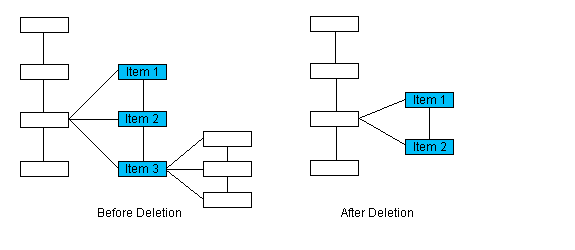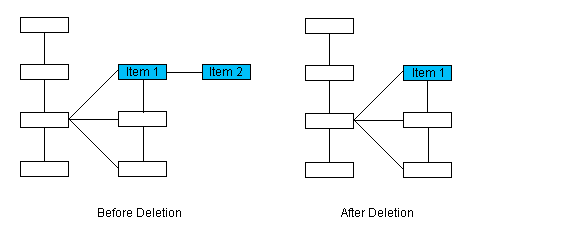DeleteElement Method
Deletes the specified item from the Data Set.
public DicomElement DeleteElement(DicomElement element)
Public Function DeleteElement( _ByVal element As DicomElement _) As DicomElement
public DicomElement deleteElement(DicomElement element) public:DicomElement^ DeleteElement(DicomElement^ element)
Parameters
element
The item to be deleted.
Return Value
An adjacent item if there is one. If the item being deleted has a sibling (same level, same parent), following it, the returned object will point to this sibling. If the item being deleted does not have a sibling following it, but has a sibling preceding it, the returned object points to the preceding sibling. If the item being deleted is an only child, the returned object points to the parent. If the item being deleted has no siblings and no parent, the method returns a null reference (Nothing in VB).
You can remove all items from the Data Set using the DicomDataSet.Reset method. Since the Data Set is stored internally as a tree, the deletion must be carried out as a tree.
When deleting an item from the tree, if the item being deleted has a sibling (same level, same parent), following it, the object returned by the method points to this sibling. If the item being deleted does not have a sibling following it, but has a sibling preceding it, the returned object points to the preceding sibling. If the item being deleted is an only child, the returned object points to the parent. If there is no parent, the method returns a null reference (Nothing in VB). Below are illustrations of these situations.
For the sake of these illustrations, the order of siblings is top to bottom. A preceding sibling is drawn above the sibling it precedes, a following sibling is drawn below the sibling it follows.
Please note that the numbering of the items of interest is arbitrary, and does not imply order.
In this illustration, item 2 will be deleted. Since it has a following sibling, the returned object will point to item 3.

In this illustration, item 3 will be deleted. Since it does not have a following sibling, but does have a preceding sibling, the returned object will point to item 2.

In this illustration, item 2 will be deleted. Since it is an only child, the returned object will point to the parent, item 1.

In this illustration, item 1 will be deleted. Since it has no siblings and no parent, this method will return a null reference (Nothing in VB).

Reference
© 1991-2020 Apryse Sofware Corp. All Rights Reserved.
